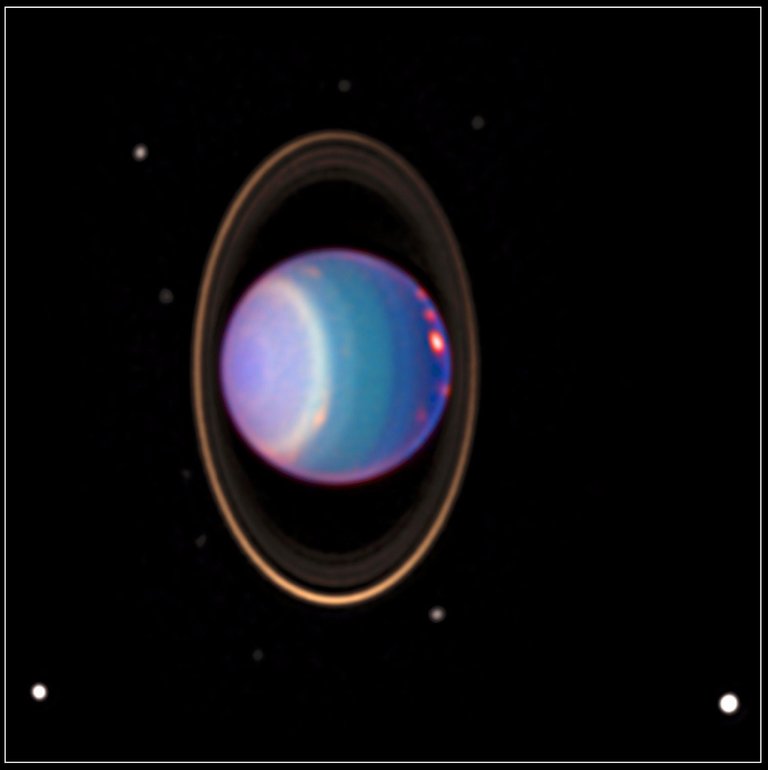Uranus surrounded by 4 rings and 27 moon is likely to have ocean on 4 moons
Scientists are engaged in sifting the ashes of the universe in search of a planet with water and here in the planets of our own solar system oceans of immense water are hidden. Some similar news is coming out in a new research. It is being told that there are oceans of water on the satellites of the planet Uranus. A lot can be achieved on this planet if there is water.
data from the Hubble Space Telescope
Scientists used data taken by the Hubble Space Telescope in 1998 to gather information about this planet. The planet is surrounded by four beautiful rings of its own in a color-enhanced view. So far 27 moons of this planet have been detected. In which the four moons contain the vast ocean in themselves. However, the possibility of being an ocean has been expressed. This is yet to be confirmed. But it is certain that there will be water on this planet, whether it is in the form of liquid water or in the form of ice.
Findings from computer modeling
This study was done through new computer modelling. In which the data of NASA’s Voyager spacecraft was also used. It was only then that scientists were able to conclude that the four largest moons of Uranus had an ocean layer between their cores and icy layers. Although he studied five moons. These are the largest satellites of all Uranus. The names of these satellites are Ariel, Umbril, Titania, Oberon and Miranda.
Ariel, Umbril, Titania and Oberon are the names of these moons.
Oceans are hidden in the interior of Ariel, Umbriel, Titania, and Oberon. Their water can be as salty as Earth’s oceans. Whose water can also be shiny. These oceans lie on top of layers of dry rock.
Oceans can be dozens of miles deep
In total, at least 27 moons orbit Uranus. The four largest range from Ariel, which is 720 miles (1,160 km) across, to Titania, which is 980 miles (1,580 km) across. Scientists have long thought that Titania, given its size, would be most likely to retain internal heat due to radioactive decay. The other moons were previously widely believed to be too small to retain the heat needed to keep an internal ocean from freezing, particularly because the heat created by the gravitational pull of Uranus is only a minor source of heat.
Discovery published in the Journal of Geophysical Research
The National Academies’ 2023 Planetary Science and Astrobiology Decadal Survey prioritized exploring Uranus, said lead author Julie Castillo-Rojas of NASA’s Jet Propulsion Laboratory in Southern California. In preparation for such a mission, planetary scientists are focusing on the ice giant to increase their knowledge of the mysterious Uranus system. Published in the Journal of Geophysical Research, the new work could shed light on how future missions might probe moons, but the paper also has implications that go well beyond Uranus.
https://space23lyear.com
Source: NASA/JPL-Caltech.
Photo: Hubble.

Journalist Space science.
Working with India’s leading news paper.
और अधिक जानें

